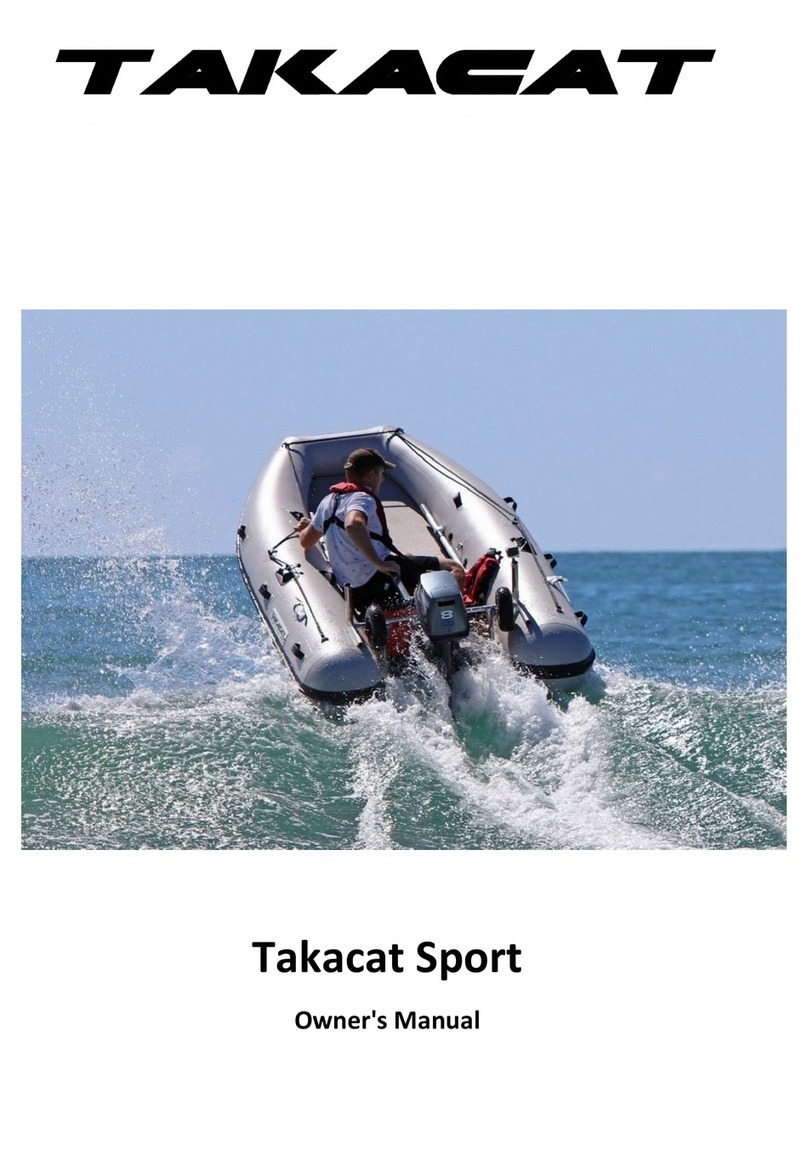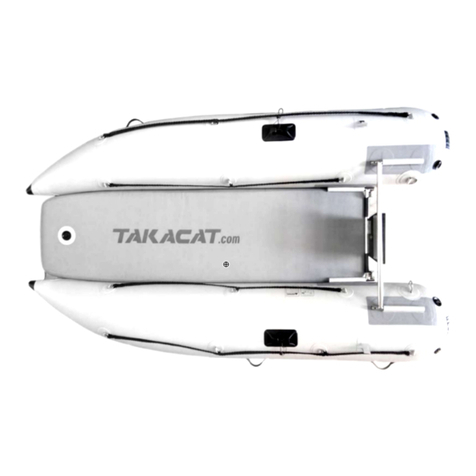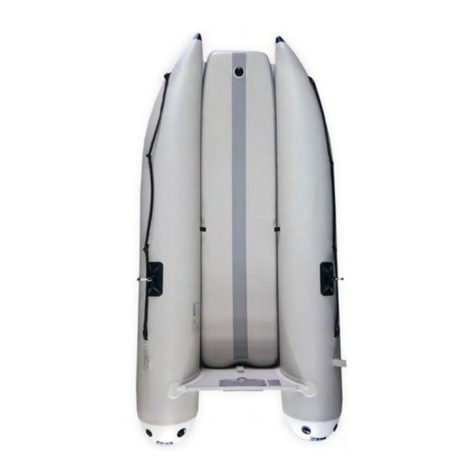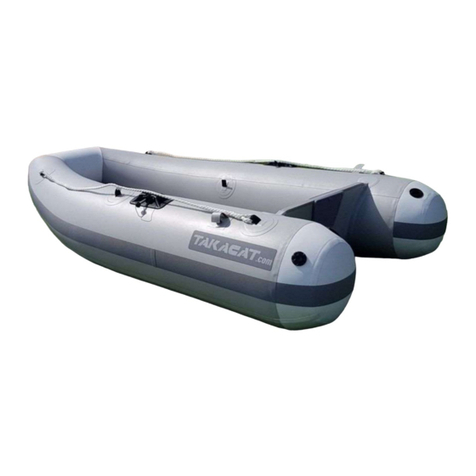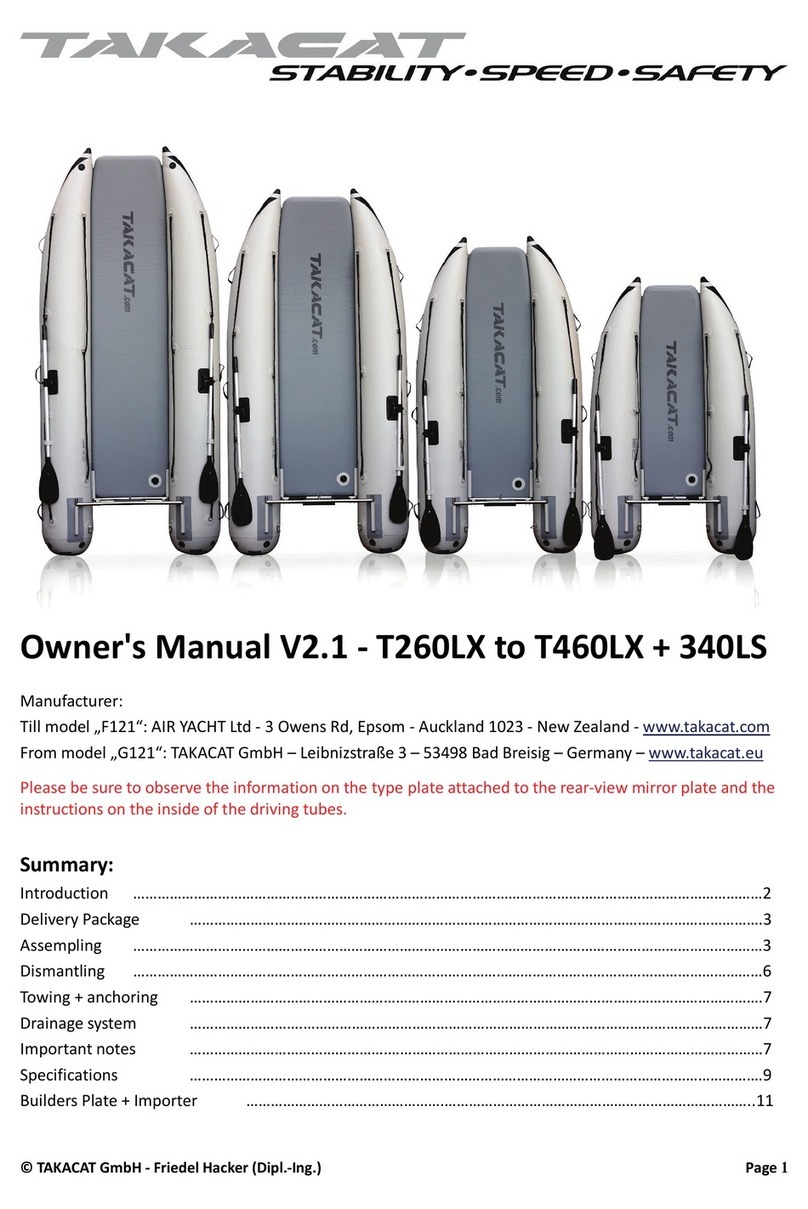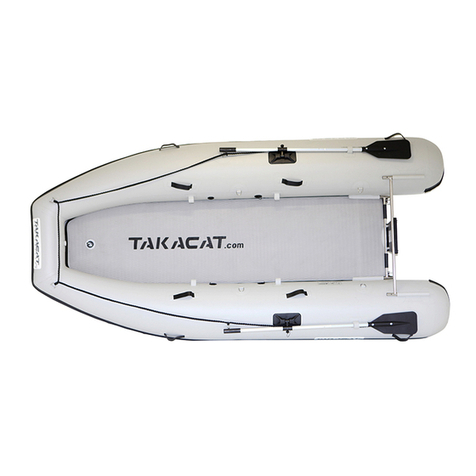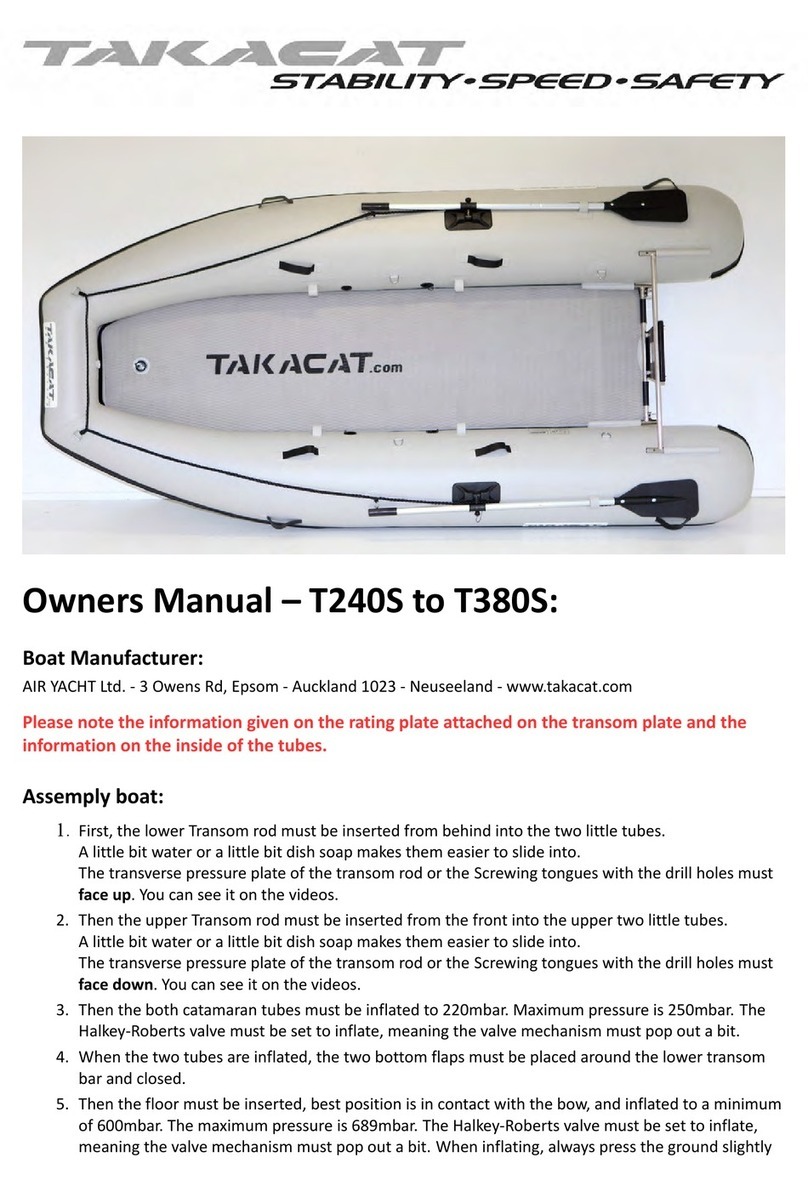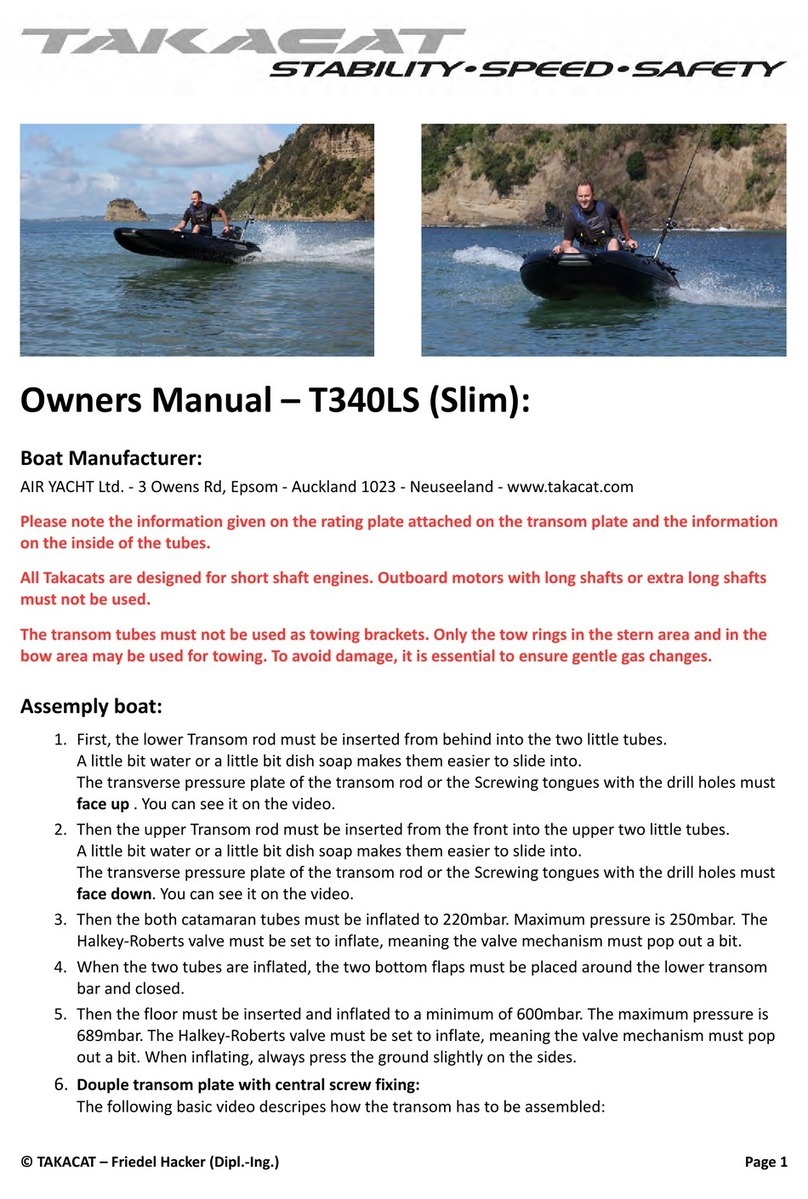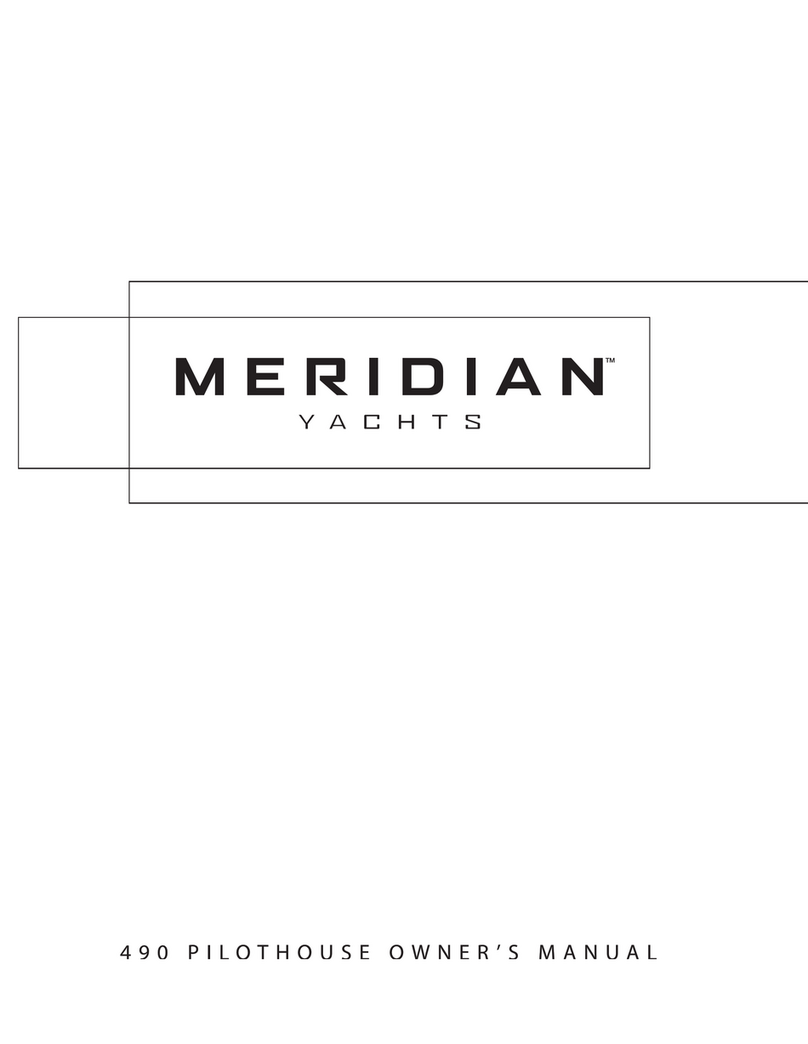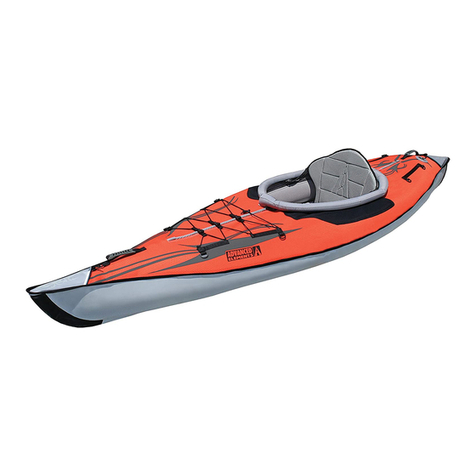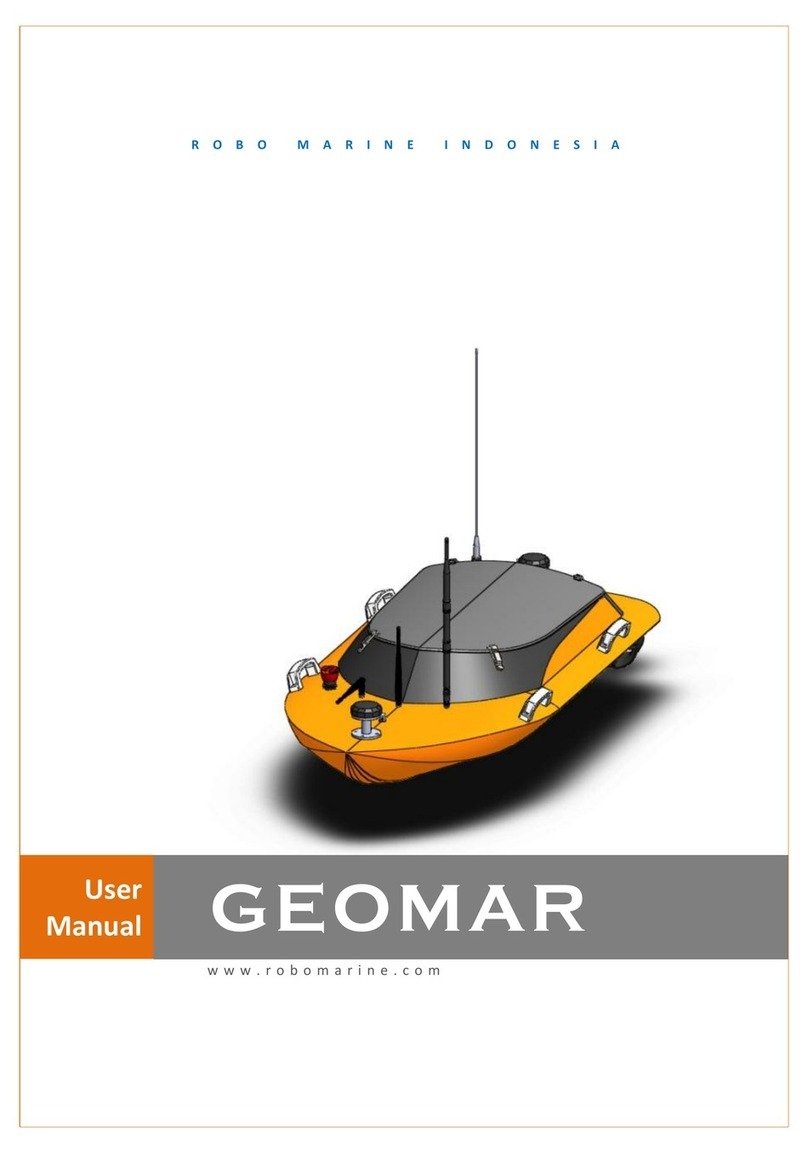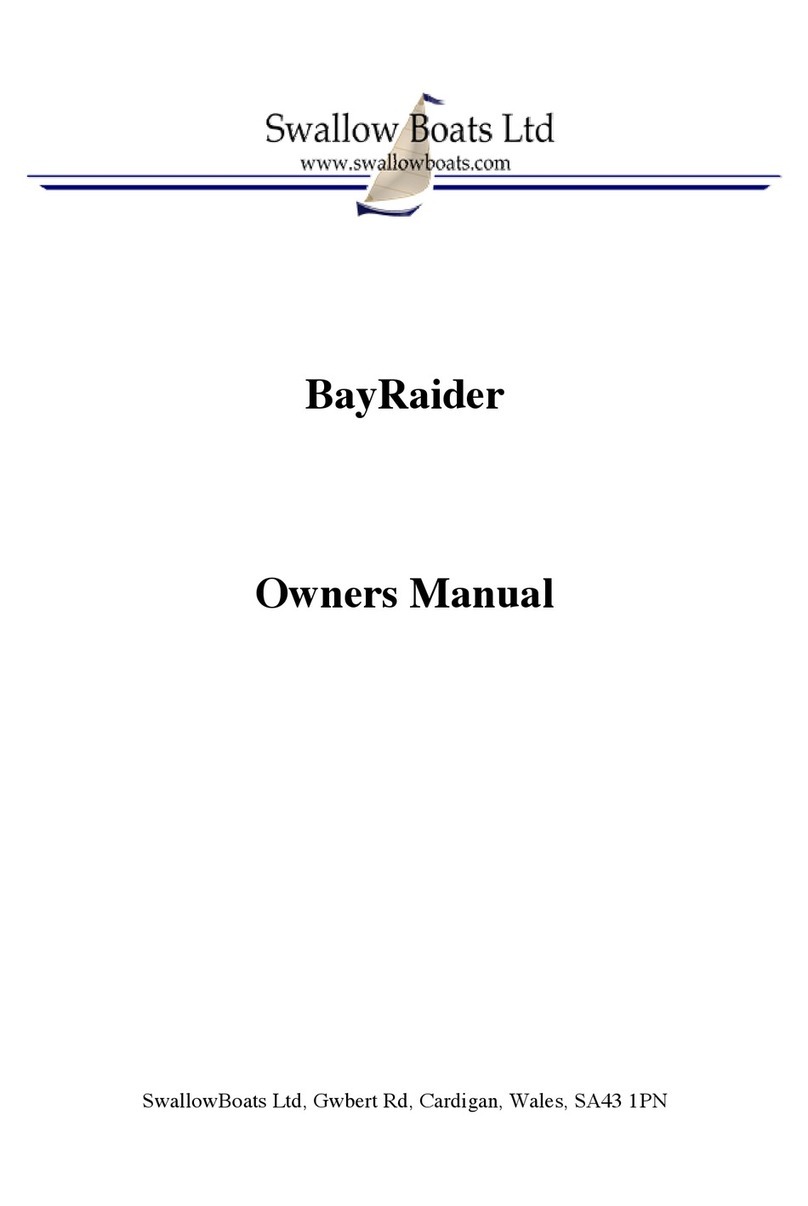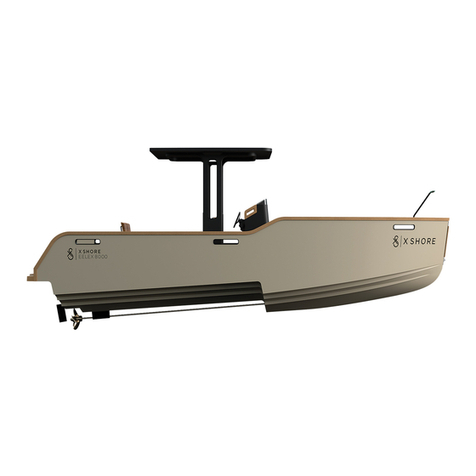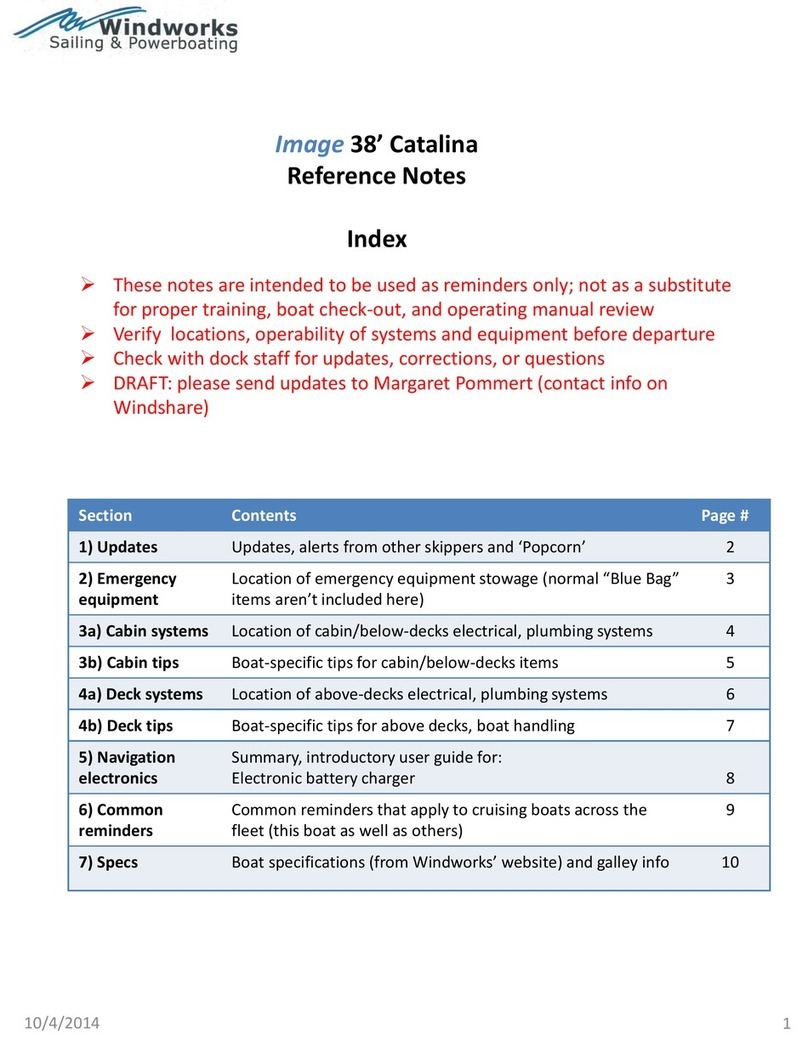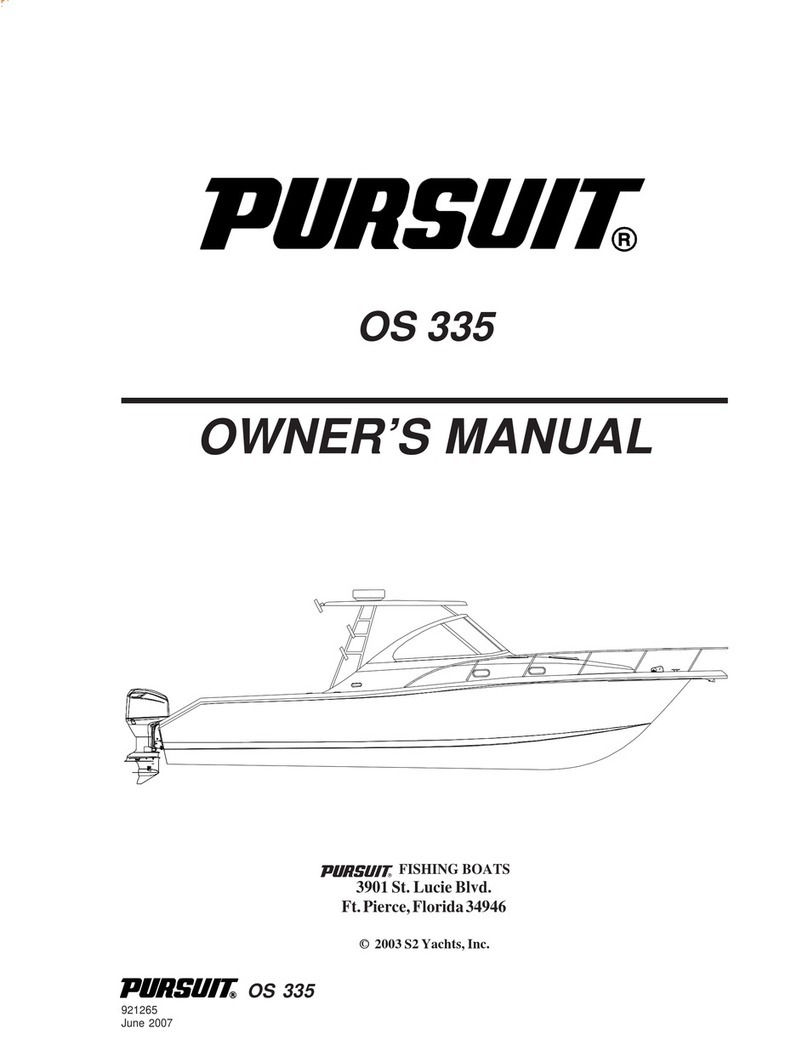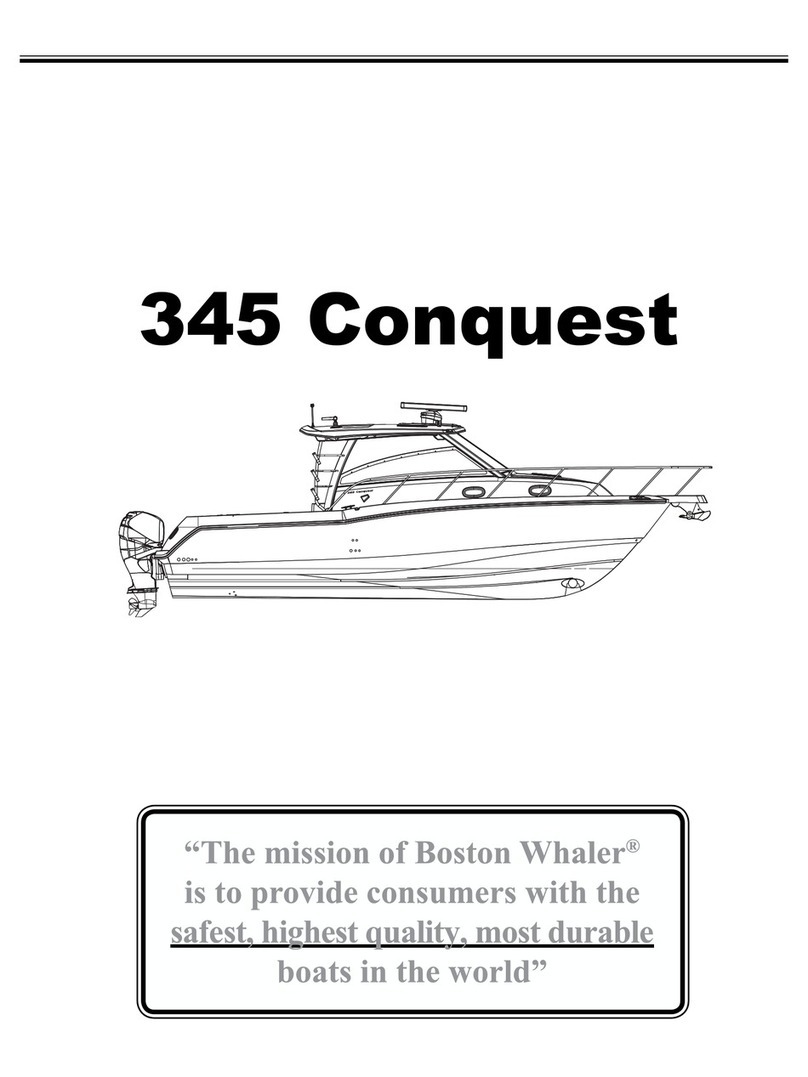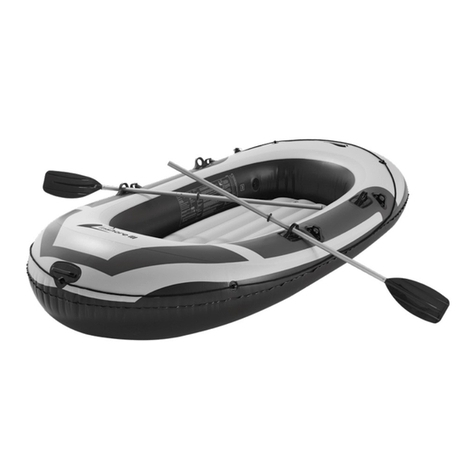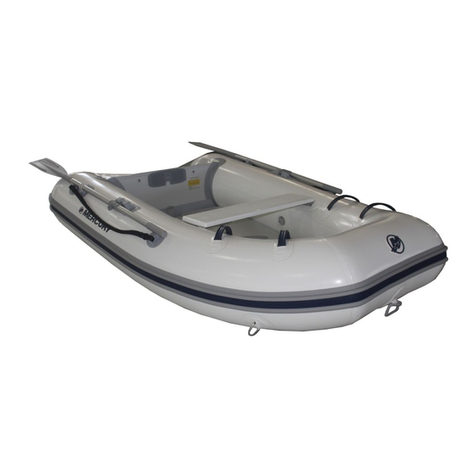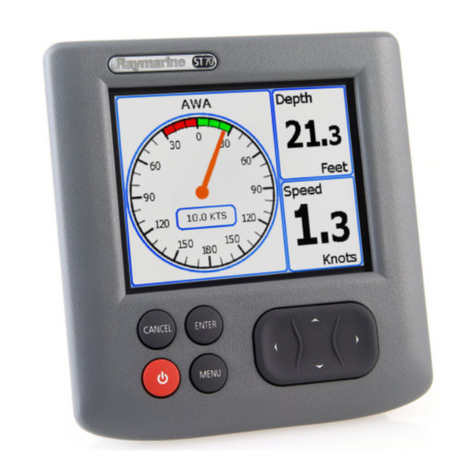
© TAKACAT – Friedel Hacker (Dipl.-Ing.) Page 2
Storage:
TAKACAT Sport or Lite inflatables can be stored either inflated or in a storage case. When stored in a bag,
the bag must be dry. Take this opportunity to clean sand etc. from between the floorboard and pontoons.
When it comes to winter, there are some basic tips. The boat does best not to stand in freezing
temperatures, although it is not a must to have it indoors. If you cover the boat, do not use a vinyl tarp and
let some air out of the pontoons.
Notice:
1. Note - Fixation seam:
When you have inflated the driving tubes you will see a split seam. This seam is
not a defect but a so-called fixation seam, which is set during the production
process so that the connecting bottom can be glued at right angles to the two
driving hoses. When inflating, this fixation seam opens up and the separated
stitch threads can be seen, which rub away over time.
2. The Takacat tubes are equipped with safety relief valves. This ensures that any dangerous excess
pressure is dissipated in strong sunlight to prevent damage to the tubes. If the outside temperature
then drops again, this may cause the air pressures to be no longer the correct values. Therefore,
always check the correct air pressure values of the tubes and the high pressure floor before each
ride. In the event of heat changes during the day, be sure to check the pressure values of all air-
filled components and correct them to the correct pressure values to avoid damage. The high
pressure floor is not equipped with a pressure relief valve. Therefore avoid excessive sunlight on the
high-pressure floor and check and, if necessary, correct the air pressure values. When the boat is
not in use, we strongly recommend that you store it in the shade or under a cover to avoid
overheating and increased air pressure in the hoses and in the high pressure floor. An inflatable
boat that remains inflated over several days can lose pressure. According to ISO 6185, a pressure
drop of 20% is allowed within 24 hours.
In inflatable boats, valve seats may settle slightly after production due to fluctuations and
movements of heat, allowing air to escape. In this case, there are two valve wrenches in the
repair box. The key with smaller teeth is compatible with Halkey-Roberts air inlet / outlet valves,
the key with coarser teeth is compatible with both overpressure safety valves. Slightly turn the
valve insert to the left with the appropriate valve wrench so that the lower slip friction can take
effect and then turn it by hand to the right => https://www.youtube.com/watch?v=wLY4nj24-
BE
3. The tubes of the Takacats are provided on the underside with protective strips. Nevertheless, you
must avoid contact with sharp objects to prevent damage. It is urgent to move the dinghy with
utmost care in areas of shallow water. Be sure not to damage the Takacat's hoses and high-pressure
airfloor with sharp and / or sharp-edged objects.
4. In your own interest and in the interests of any persons traveling with you, make sure that all
necessary safety precautions have been taken and that all necessary rescue equipment has been
carried and if necessary created.
5. If you do not have a formal boating training, we recommend that you take a boat safety course in
which you learn the skills of good seamanship, such as: Navigation, safety, the environment, boat
handling, linen handling, docking, troubleshooting engine problems, and appropriate responses in
emergencies. The skills you learn in a boating course are never wasted and can not only be helpful
in an emergency, but also life-saving.
